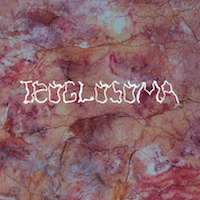Valentin Bansac, laura fernández antolín, Sofia Kouloukouri, Manuel Prados, Elena Rocabert, Oxel Urra Sánchez, Jorge Van Den Eynde
Composed of three artists, two architects, a curator and a scientist, our collective collaborates with the Altamira National Museum and Research Center. Situated in Santillana del Mar, Cantabria, on the northern coast of the Iberian Peninsula, the Cave of Altamira was discovered in 1868 and its Museum showcases Paleolithic art and artifacts dated – for the oldest – from around 36’000 years ago.
The cave has indeed been closed to the public since 1977, and is now observable – besides for archaeologists and five lucky visitors a week – only as a fac-simile in the museum named Neocueva. In this situation, we found ourselves unable to enter the cave. However, we explored the site more in-depth than any visitor, bringing our bodies closer to the ground. To understand this gigantic and entangled organism, we articulate a methodology through sensoriality and speculative fiction, alongside Chilean SF writer, Simón López Trujillo.
Interested in the deep time that this naturecultural place manifests, we investigate notions such as the absent, dichotomies between encounter and contagion, conservationism, decomposition, cohabitation, and the artificial through speculative endeavors that explore more-than-human perspectives and scales.
We touch and smell the minerals once used as pigments in cave paintings. We slide and listen to the sound of the meadows. We dream, day and night, linking our imagination and unconsciousness with the collective experience of the territory.
Fascinated by the secret life of the infinite number of agents that cohabit in the cave and their environment: bacteria attached to the rock, fungi, insects, and animals. The water dripping inside. We seek to give voice and tell the multiplicity of latent stories in Altamira by making a cross-section of the geological, biological, and human strata that have existed – and will exist. Showing the delicate balance between the agents of the cave ecosystem as well as the apparatus separating them from the ecosystem of the museum, we found ourselves in an ecotone, an interphase from one domain to another. It is in perpetuating the sensorial adventure we have undertaken in Altamira that we now prepare a multi-agent narrative with interventions occupying all the thresholds of its territory.
Inspired by the Greek word trogli, meaning cave, and soma, body, TROGLOSOMA designates both the non-human bodies separated from the cave and the cave itself in a single body, a living ecosystem. TROGLOSOMA is our ongoing theoretical and practical research. It is shaped as diverse outcomes at different temporalities. It consists of formal and material experimentations as well as processes of sample collection, archival activations and writing exercises. Its ultimate intention is to expand the research methodologies of the Altamira Museum and Research Centre, opening up for polyphonic, multi-sensorial and multimedia narrations of the different agents involved in the Altamira cave and territory.
